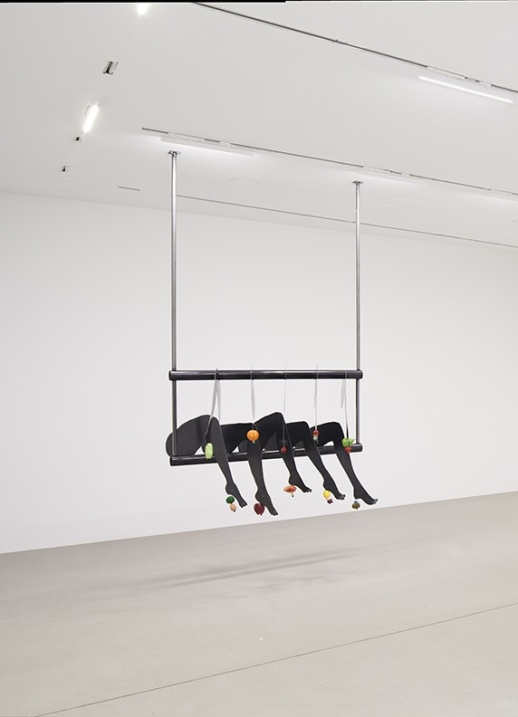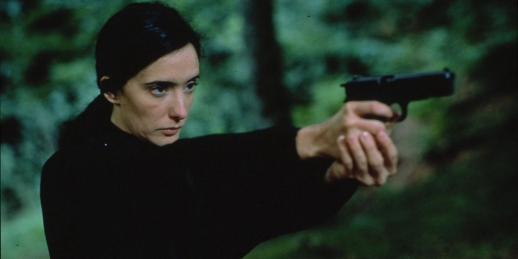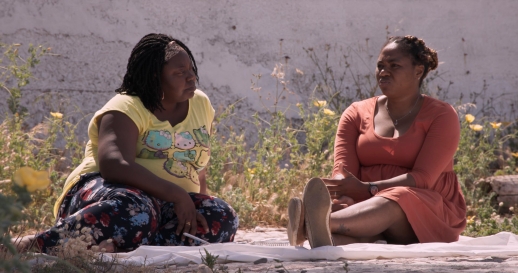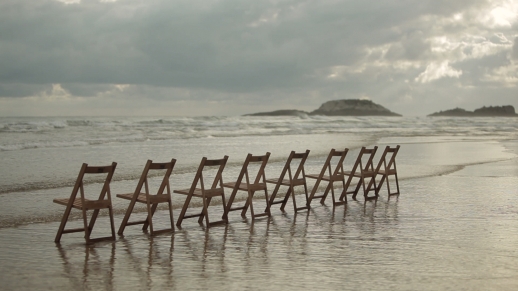When a work surpasses the recognition of its author, it becomes part of society. The work shifts from belonging to the author to becoming the property of the audience. A connection develops between the work and the audience because it resonates with something within them, resulting in a change that endures forever. Emotions are activated and the identification mechanism is set in motion. These works help us feel connected to the collective, akin to a ritual, and transform into treasured hymns of life, safe havens of memory. There are many such works in Basque culture.
Outcomes of ‘Miñan’
18 Apr 2025
On its way to becoming one of them is ‘Miñan’ 2019, Susa), by Amets Arzallus (Hendaye, 1983) and Ibrahima Balde (Conakry, 1994). The word miñan means ´little brother,´ and the book bearing this name chronicles Balde´s migratory journey. It is based on conversations he had with Arzallus and was written in Basque by Arzallus. The text, which received the Euskadi Silver Prize in 2020, has charted its own course. The writer Timberlake Wertenbaker translated it into English under the title ‘Little Brother: an Odyssey to Europe’. Ander Izagirre was in charge of the Spanish translation, titled ‘Hermanito’ (2021, Txalaparta). It has also been published in several other languages, including German, Catalan, Galician, and Italian. Balde and Arzallus weaved together a narrative that undeniably resonates with readers. This connection has been acknowledged by numerous renowned figures worldwide, including journalist Jordi Évole, artist Alba Flores, writer Andrea Abreu, and Pope Francis I, who have all spoken about the book.
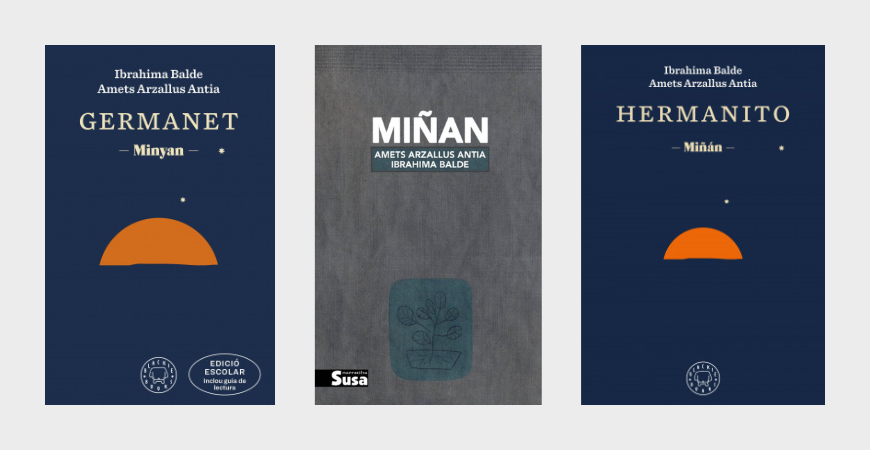
The impact of ‘Miñan’ is incomparable. According to the data, it is the most widely read book in Basque to date, and as previously mentioned, society is embracing it as its own. Wertenbakler, who translated the book into English, adapted Balde and Arzallus´ work in 2024 to turn ‘Miñan’ into a play. Under the triple direction of Ander Lipus, Manex Fuch, and Philippe Doucou, the company Artedrama has produced this adaptation. In keeping with Artedrama´s tradition, they held a preview in Luhuso before premiering the play on October 25, 2024, at the Arriaga Theatre in Bilbao. They offered a performance on both Friday and Saturday, filling the Arriaga both days. Since then, the quartet of actors – Ander Lipus, Sambou Diavy, Eihara Fernandez de Larrea, and Mikel Kaye – has performed in numerous venues.
One relationship, one movement
Ibrahima Balde and Amets Arzallus crafted the text using simple words and a good measure of poetry. Languages reflect the worldview of their speakers, which is why finding common ground for mutual understanding is essential. They met in Irungo Harrera Sarea, a network dedicated to providing assistance to migrants and refugees passing through the region, and little by little they began to create and strengthen what in Euskara we would call a relationship and what for Balde is also a movement. Relationships are born and built through contact. In their first conversation, Balde shared with Arzallus that his desire was not to become Europeanised. Instead, Balde wanted to be a lorry driver and was training for that goal.
Languages reflect the worldview of their speakers, which is why finding common ground for mutual understanding is essential.
He knew that he would soon begin working in Guinea, but his younger brother´s decision altered his aspirations; when the younger brother left, it changed Balde´s destiny. This challenged Arzallus´s assumptions, and he was captivated by the story, as he quickly connected with Balde´s way of expressing himself. Arzallus, coming from an oral culture, recognised a unique eloquence in Balde that reflected remnants of that culture. He appreciated the way Balde constructed his story. The logic behind the ordering of the words and the beauty of the poetry made Arzallus want to take action. The book ‘Miñan’ was born from that spark.
Languages are ways of seeing the world
Balde and Arzallus communicate in French and they do so because their linguistic base, i.e. the tool they use to construct the world in words, is different. Balde is from the Fula ethnic group and his mother tongue is Pular; He also speaks Malinké and Susu, as well as French, which he learned at school. Arzallus’ linguistic construction is Euskara.
The writing process was a shared journey. They began sharing experiences to write a dossier requesting political asylum for Ibrahima Balde, unaware that this effort would give birth to the book ‘Miñan’. Ibrahima Balde´s experiences, along with his ability and style of sharing them, stirred something in Arzallus, prompting him to engage in an inward journey that influenced his own life. From the beginning, Arzallus understood that he needed to be the instrument to bring to life what had emerged from that spark. This meant that the story had to be constructed by Balde, and his role would be solely to facilitate its materialization, without taking on a more leading roll. His biggest headache was to find a Basque language that suited Balde´s story, as he was determined to capture Balde´s rich oral expression in written form.

The journey of a journey
Ibrahima Balde travelled through a total of seven countries from the time he left Guinea until he arrived in Morocco, passing through Mali, Tuareg, Algeria, Libya and Algeria. Together they relived the experiences, emotions, powerlessness and thoughts of that journey.
He expressed that he didn´t want to discuss those things any further, since talking about them made him vividly relive the experiences. He reminded Arzallus that even though the listener was there, he felt as if he were back in those moments, reliving the emotions again. So, he preferred not to talk about it. However, since he had been asked, he felt compelled to respond, and in doing so, he was overwhelmed by the emotions associated with those memories yet again.
"I don´t want to talk to you any more about these things, because when I talk I begin to see, before my eyes, all that I am explaining to you. You are here now, listening, but I am there again, in my flesh, and when I tell you I begin to live it all over again. That´s why I wouldn´t want to talk to you about these things. But you have asked me and I have answered you. And when I have told you, I have felt it all over again."
(´Miñan´, Amets Arzallus and Ibrahima Balde)
Balde recounted his journey to Arzallus during several conversations, responding to Arzallus´s questions. In the process, the pain generated concern, and they were tempted to abandon what they were creating together. Arzallus had doubts from time to time; he didn’t know whether what they were doing was making Balde suffer or helping him. The Guinean shared particularly difficult passages that left him with a lump in his throat, and in recounting them, he could not help but intersperse tears and moments of silence. At those moments, Arzallus questioned whether the pain was worth it. However, Balde found the strength to persevere, and in addition to overcoming his doubts, he was able to sustain his motivation.
There was also fear surrounding the theatrical adaptation: how could the story and the pain expressed in the book be effectively portrayed on stage? The theatre company worked hard to convey the story that Ibrahima Balde had lived through his own experiences, using their voices and bodies to represent it as faithfully as possible. Working collectively and side by side, each member of the group focused on attending to the details as much as possible.
The play lasts an hour and a half and includes the most significant passages from the book. ‘Miñan’ is the third play about migration staged by the company Artedrama, and it approaches the subject with the sensitivity that such narratives demand, as it recounts a true story rather than a fictional one. The theatre company spent long periods together. In addition to shows for theatres and other stages, they also offer performances aimed specifically at schools, as an exercise in raising awareness around social issues.
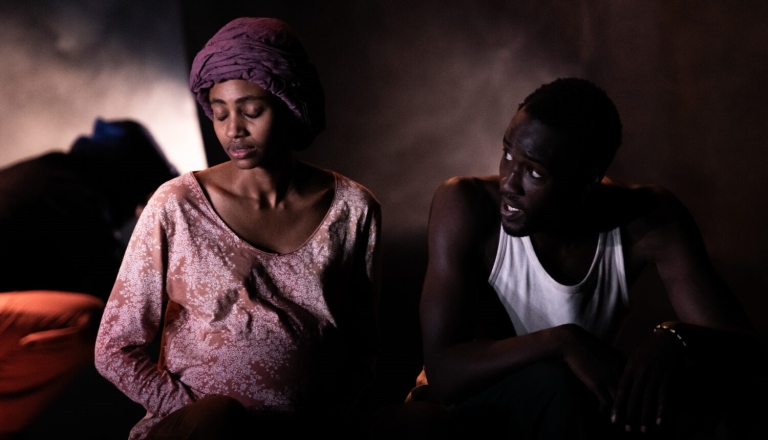
No one remains indifferent after reading ‘Miñan’´ or seeing the play. What´s more, the actors themselves experienced the doubts and emotions described by Amets Arzallus. The actor Sambou Diaby (Pamplona, 1999) plays Balde. The two had the opportunity to meet in Madrid, where Diaby expressed gratitude for the visit to help him prepare for his role. Amets Arzallus´s assistance has also been essential in helping him understand the character´s nuances more deeply. Additionally, shortly before the premiere of ‘Miñan’, Diaby received wonderful news: the Basque Actors´ Union awarded him the Abrazo prize for best new actor for his work in the TV series “Itsaso”.
The story of ‘Miñan’´ is infused with nostalgia, curiosity, anguish, longing, and, above all, a desire to live. It chronicles a journey that, through language and the poetics that it can create, has taken advantage of the kaleidoscopic nature of creativity to explore all the sensations that define our humanity.
